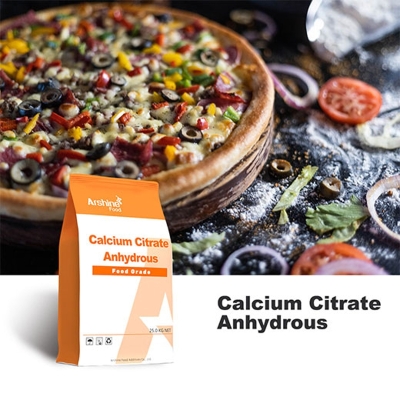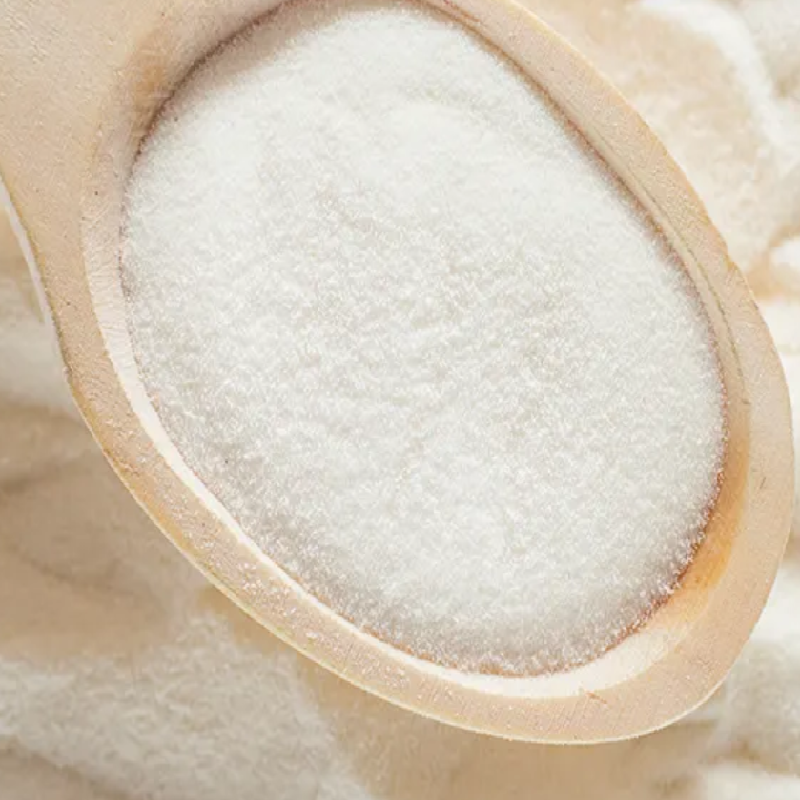-
Categories
-
Pharmaceutical Intermediates
-
Active Pharmaceutical Ingredients
-
Food Additives
- Industrial Coatings
- Agrochemicals
- Dyes and Pigments
- Surfactant
- Flavors and Fragrances
- Chemical Reagents
- Catalyst and Auxiliary
- Natural Products
- Inorganic Chemistry
-
Organic Chemistry
-
Biochemical Engineering
- Analytical Chemistry
- Cosmetic Ingredient
-
Pharmaceutical Intermediates
Promotion
ECHEMI Mall
Wholesale
Weekly Price
Exhibition
News
-
Trade Service
Emulsion gels are defined as complex colloidal materials formed by the combination of emulsion dispersions and gels, which can be produced
by filling a stable emulsion into a gel continuous phase.
In the food system, the matrices that make up emulsion gels are divided into three main categories, namely proteins, polysaccharides and protein-polysaccharide complexes
.
In recent years, emulsion gels prepared with protein-polysaccharide complexes have become a major research hotspot
.
Peanut protein has high protein digestibility correction amino acid score and good emulsification, foaming and gelatinity and other functional properties, which is an excellent source
of gel matrix.
Pectin is a high-value functional food ingredient with excellent thickening and stability
.
Compared with emulsion gels prepared from a single gel matrix, the combination of peanut protein with better emulsifying properties and pectin with better thickening and stability will have better results
.
Studies have shown that the addition of proteo-polysaccharides can significantly enhance the thermal stability of emulsion gels, improve the strength of gel network structure, and significantly increase
the hardness, elasticity and water holding capacity of emulsion gels.
The physicochemical properties of emulsion gels mainly depend on the type and preparation method
of gel matrix and filling oil phase.
At the same time, the application of emulsion gels in food formulations can produce foods with low fat content, and the combination of gelling agents and oils is an effective way to
achieve this.
Ding Ling and Chen Fusheng* from the College of Cereals, Oils and Food of Henan University of Technology combined peanut protein and high-ester pectin by ultrasonic synthesis to prepare emulsion gels to study the effects of different oil phases (olive oil, peanut oil, 24 degrees palm oil) and their addition amounts on the apparent properties, texture, rheological properties and microstructure of emulsion gels, elucidated the influence of oil phase and its addition amount on gel strength and mechanical properties, and explored the formation mechanism
of emulsion gels.
The research results will provide a theoretical basis
for the application of peanut protein-pectin composite emulsion gel in dairy products and baked goods.
1.
Apparent characteristics of PPI-HMP composite emulsion gel
The result is shown
in Figure 1.
At pH 4.
0, PPI-HMP ratios of 10:1 and 5:1 do not form gels, but are a milky white viscous liquid; Weak gels are formed at 40:1 and 20:1, the color is transparent and soft to the touch; The emulsion gel formed at 5:2 has a uniform color and hard texture (Figure 1a).
Therefore, in order to ensure that the formed emulsion gel has the best texture, the PPI-HMP ratio of 5:2 was selected, and the formation of
the emulsion gel with pH 2.
0~8.
0 was investigated.
As can be seen from Figure 1b, the emulsion gel formed at pH 6.
0 has the best texture, while at pH 7.
0 and pH 8.
0, oil droplets aggregate and precipitate cannot form a stable emulsion, and it is difficult to form an emulsion gel
.
This is because under neutral and alkaline conditions, PPI and HMP have opposite charges, and it is difficult for particles to repel each other to stabilize oil droplets
.
Therefore, the emulsion gel
was prepared under the condition of protein-pectin ratio of 5:2 and pH 6.
0.
At the same time, the effects of oil phase type and addition amount on the apparent characteristics of PPI-HMP composite emulsion gel were investigated, and the results are shown
in Figure 2.
With olive oil and peanut oil as the oil phase, the emulsion gel cannot be formed when the amount is 80% (V/V); With 24 degrees palm oil as the oil phase, when the addition amount is greater than 70% (V/V), the emulsion gel
cannot be formed.
As the amount of oil phase is added, the finer and smoother the surface of the emulsion gel, the harder
the texture.
This indicates that the active-filled droplets mechanically interact with the protein-pectin matrix of the gel, thus being able to influence the texture and gel strength
of the emulsion gel.
2.
Effect of oil phase and its addition amount on gel texture of PPI-HMP composite emulsion
As shown in Table 1, the emulsion gels of different oil phase types increased with the addition of oil phase, and the hardness, adhesion, adhesion, recovery and chewiness also increased, and the hydrogel was not reflected
in the table because it could not form a gelatinous appearance.
As the active filler material, the oil phase mechanically interacts with the gel matrix composed of protein-pectin, which affects the gel strength of the emulsion gel, so that the hardness of the emulsion gel is significantly increased (P<0.
05).
<b11> The increase of the amount of oil phase addition will enhance the gel network strength of the emulsion gel, and the mechanical properties will be greatly improved
.
However, the change of oil phase addition amount did not have a significant effect on the elasticity and cohesion of the emulsion gel (P<0.
05).
<b13> Studies have shown that the elasticity of emulsion gels is related
to pectin concentration.
Among the individual emulsion gel samples, the emulsion gel prepared with 24 degrees Celsius palm oil with an oil phase addition of 60% had the highest
hardness.
It shows that the hardness of the emulsion gel is also related to
the hardness of the grease itself.
3.
Effect of oil phase and its addition amount on the rheological characteristics of PPI-HMP composite emulsion gel
Apparent viscosity
As shown in Figure 3, when the amount of oil phase addition increased from 40% to 70% by volume, the initial viscosity of the system gradually increased, and the samples with peanut oil, olive oil and 24 degrees palm oil all exhibited pseudoplastic fluid behavior
.
As can be seen from Table 2, with the increase of oil phase addition, the viscosity coefficient of the compound system gradually increases
.
The emulsion gel samples prepared at the highest addition amount of each oil phase correspond to the maximum viscosity coefficient K (representing the apparent viscosity of the system) and the smallest fluid index n
, respectively.
This shows that in the emulsion gels prepared in high oil phase, the oil droplets not only participate in the formation of the gel network as "active fillers" but also as structural units, so that the mechanical properties of the gel network are enhanced and the apparent viscosity is increased
.
Storage modulus and loss modulus
As shown in Figure 4, during the 45 °C holding process after TG enzyme was added for 1 h, the G' values of all samples slowly increased with time, and the G' values of all samples (except PPI-HMP hydrogels) were higher than the G" values
.
The hydrogel G' was first lower than G", lengthened over time and eventually higher than G", and there was a gel transition point
at 76 minutes.
PPI is slowly crosslinked under the action of TG enzyme to form a network structure, and after adding the oil phase, the emulsion becomes more viscous, less fluid, and has a higher G' value, thus showing a certain rigidity
at the beginning of the test.
During the temperature increase from 45 °C to 85 °C, both the G' and G" of the hydrogel and the emulsion gel decreased
over time.
It may be that both hydrogels and emulsion gels have higher viscosity, while high-viscosity fluids decrease in viscosity with increasing temperature, which in turn causes G' and G" to decrease
.
When the temperature was raised to 85 °C and kept warm for 30 minutes, the G' and G" of both hydrogels and emulsion gels increased, especially hydrogels
.
This is due to the high temperature denaturation of PPI and the further formation of the gel structure
under the influence of hydrogen bonding and hydrophobic interactions.
When the temperature drops from 85 °C to 25 °C, both G' and G" have an upward trend and remain at high values
.
This is mainly due to the entropy effect and the enhancement
of PPI hydrogen bonding and intermolecular forces at lower temperatures.
It can be seen from Figure 4B~D that the G' value of PPI-HMP composite emulsion gel increases
with the increase of oil phase addition.
This indicates that the increased amount of oil phase addition can make the structure of the emulsion gel stronger
.
When the amount of oil phase was 60%, the G' values of the emulsion gel under different oil phases were: palm oil> olive oil > peanut oil at different oil
phases.
Under the same conditions, compared with peanut oil and olive oil, the emulsion gel prepared from 24 degrees palm oil has the strongest rigidity and the greatest
gel strength.
This is consistent with
Section 2.
2 texture test results.
Viscoelastic properties
As shown in Figure 5, the G' of each emulsion gel sample is greater than G' and increases
with frequency.
PPI-HMP hydrogels begin to be greater than G' after a frequency of 0.
40 Hz, and since in strong gels, the modulus is frequency-independent and does not intersect, and in weak gels, a frequency-dependent occurs
.
The G' and G" of emulsion gels containing different oil phases were larger than those of hydrogels, and emulsion gels with olive oil as oil were larger than emulsion gels
with peanut oil as oil.
The results show that the stability of the gel network structure of the emulsion gel is greater than that of the hydrogel, and that of the emulsion gel network structure with olive oil as the oil phase is greater than that of the emulsion gel
with peanut oil as the oil phase.
This may be related
to the chemical affinity between the adsorbent layer on the droplet surface and the gel matrix and the mechanical properties of the packing particles.
With the increase of the oil phase addition, the G' and G" of each emulsion gel increased, which indicates that the mechanical properties of the emulsion gel can be enhanced
by the increase of the oil phase addition.
4.
Effect of oil phase and its addition amount on the microstructure of PPI-HMP composite emulsion gel
As shown in Figure 6, the emulsion gel in this study is formed
by droplets wrapped in a gel matrix.
Figure 6A shows that a similar gel network has
emerged in the PPI-HMP suspension.
TG enzyme addition catalyzes the acyl transfer reaction between (or within) proteins, resulting in covalent crosslinking
of proteins.
The formation of the emulsion gel network structure under low oil phase is mainly formed
by cross-linking between proteins that are not adsorbed to the surface of the oil droplet.
With the increase of oil phase addition, the droplets gradually change from dense spherical-like droplets to irregular structures
.
This indicates that as the amount of oil phase addition increases, most of the droplets begin to accumulate with each other, and the size and distribution become uneven
.
This is because with the increase of the ratio of the oil phase, the hydrophobic interaction between the oil droplets leads to the merger of the oil droplets, which gradually reduces the protein adsorption capacity, and the viscosity of the high oil phase emulsion system is too high, which is not conducive to the interaction
of proteins and enzymes.
Therefore, the formation of the emulsion gel network structure under high oil phase is the result
of the covalent crosslinking of enzymes and the interaction of high viscosity between the PPI-HMP composite interface film wrapped on the surface of the oil droplets.
For active-filled droplets, the size and surface properties of the droplets determine the deformability of the droplets, which determines the effect of
the droplets on the gel matrix.
When the oil phase was added at 60%, the network structure of the emulsion gel prepared from 24 degrees palm oil was denser, and the degree of oil droplet aggregation was relatively weak
.
It is shown that the network structure of the emulsion gel with palm oil at 24 degrees Celsius as the oil phase is more rigid
at this time.
Different oil phase compositions can affect the size and distribution of oil droplets, so that the G' and hardness of the emulsion gel can be changed, and ultimately the structure of
the emulsion gel.
This is consistent with
the results of texture tests and rheological tests.
Conclusion
The effects of
different oil phases and their addition amounts on the apparent properties, texture, rheological properties and microstructure of PPI-HMP composite emulsion gels were studied.
The results showed that the emulsion gel formed at the protein-pectin ratio of 5:2 and pH 6.
0 had uniform color and hard texture.
It cannot be made into a stable emulsion gel
under neutral and alkaline conditions.
With the increase of the amount of oil phase addition, the surface of the emulsion gel became more delicate and smooth, and its hardness, adhesion, adhesion, recovery and chewiness increased.
At 60% (V/V) at 24°C palm oil, the emulsion gel has the highest hardness, adhesion, recovery and chewiness values
.
The rheological results showed that the G' and G" of different oleophase emulsion gels were significantly higher than those of hydrogels, and the G' value and apparent viscosity value of the emulsion gel increased with the increase of the oil phase addition, and the apparent viscosity and G' values of the emulsion gel were 24 degrees palm oil> olive oil > peanut oil
at the same oil phase addition amount, respectively.
The microstructure results of PPI-HMP composite emulsion gel showed that with the increase of oil phase addition, the droplets began to aggregate and were unevenly distributed.
When the oil phase is added at 60% (V/V), the 24-degree palm oil-filled emulsion gel has the best ability to stabilize oil droplets and the densest network structure
.
The results show that the oil droplets interact with the gel matrix composed of peanut protein-pectin as active fillers, and the increase of the amount of oil phase addition contributes to the formation of the gel network, which enhances the mechanical properties of the gel network, increases the apparent viscosity, and makes the gel structure more rigid
.
The results of this study provide ideas
for the development and utilization of PPI-HMP composite emulsion gels in dairy products and baked goods.
About the corresponding author
Chen Fusheng, male, born in 1963, professor (second level), Ph.D.
/master tutor, vice president
of Henan University of Technology.
He has won the titles of National Model Teacher, National Talent Project Candidate, National Young and Middle-aged Experts with Outstanding Contributions, Experts Enjoying Special Government Allowances of the State Council, and Academic and Technical Leaders of Henan Province; He is the leader of the outstanding scientific and technological innovation team of Henan Province, the winner of the Henan Outstanding Talent Innovation Fund, and the winner of the Henan Outstanding Scientific Research Talent Innovation Project Fund for Colleges and Universities
.
He has presided over 33 projects such as the "13th Five-Year Plan" National Key R&D Program (Chief), the National "863" Program, and the National Natural Science Foundation of China; He has won 21 science and technology awards, including 1 second prize of National Science and Technology Progress Award and 8 provincial and ministerial science and technology progress awards; He has published 386 academic papers in important journals at home and abroad, including 108 papers included in SCI and EI; published 13 books; He has applied for 38 national invention patents, including 23 authorized invention patents
.
It has trained 119 postdoctoral fellows, doctoral and master students
.
About the first author
Ding Ling, female, born in 1997 in Jinhua, Zhejiang Province, holds a master's degree and studied at the College of Cereals, Oils and Food, Henan University of
Technology.
From September 2015 to June 2019, he studied at the College of Cereals, Oils and Food of Henan University of Technology and obtained a bachelor's degree in engineering; From September 2019 to June 2022, he studied at the College of Cereals, Oils and Food of Henan University of Technology and obtained a master's degree
.
During graduate studies, his research direction is the development and utilization of food resources; Protein processing theory and technology
.
He has won the provincial academic scholarship and school-level academic scholarship of Henan Province for three consecutive years, and actively participated in various activities held by the school during the school and won many honors
.
This article "Rheological properties and microstructure of peanut protein-pectin composite emulsion gels" is from Food Science, Vol.
43, No.
16, pp.
46-52, 2022, authors: Ding Ling, Tang Yihua, Zhang Lifen, Chen Fusheng, Lai Shaojuan
.
DOI:10.
7506/spkx1002-6630-20211014-136
。 Click to view information about
the article.







